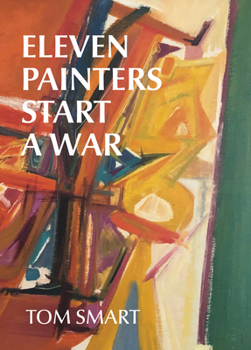Eleven Painters Start a War: The Story of a Group of Abstract Painters
By the early 1950s, art societies and academies held a tight grip on what could and could not be shown in their annual public exhibitions. Their juries were conservative tastemakers and rabid anti-modernists. Abstract art was rarely selected for display, thus robbing innovative painters of opportunities to have their work seen, reviewed, and purchased. With no outlets to show their art, ambitious, impatient painters sought alternative exhibition venues as a means of advocating for changes in the status quo.
In Eleven Painters Start a War, Tom Smart tells the story of the "Painters Eleven," a group of abstract painters whose anti-establishment ethos was defined by a respect for diversity, creative freedom, abstraction, and contempt for aesthetic complacency. He charts their paths through the 1950s and early 60s as they fight for the acceptance of abstract painting in Canadian art galleries, the critical press, and in the public imagination. Through their interactions and steadfast belief in the promise of abstract art to contribute to a better society, the Painters Eleven managed to change attitudes toward this new way of painting, but not without facing the vitriol of the art establishment who accused them of "starting a war."





